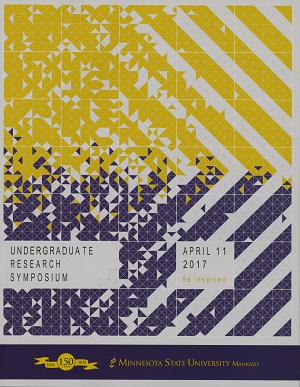Locating Unexploded Bombs in Conflict Landscapes Using Geographic Object-Based Image Analysis: A German Case Study from World War II
Location
CSU Ballroom
Start Date
11-4-2017 2:00 PM
End Date
11-4-2017 3:30 PM
Student's Major
Geography
Student's College
Social and Behavioral Sciences
Mentor's Name
Cynthia Miller
Mentor's Department
Geography
Mentor's College
Social and Behavioral Sciences
Second Mentor's Name
Fei Yuan
Second Mentor's Department
Geography
Second Mentor's College
Social and Behavioral Sciences
Description
Unexploded bombs pose extreme danger all over the world. Estimates indicate that 10-15% of bombs dropped during past conflicts did not detonate and currently remain buried below ground. Relatively small holes interspersed among larger craters are the geographic signatures indicating their entry locations. These terrain features can be visually identified on reconnaissance photographs by skilled image interpreters. This process is extremely time-intensive and cannot be relied on to find all remaining bombs, so there is a demand for the development of faster, automated search methodologies. As millions of tons of high-explosive bombs were dropped on European cities by Allied and Axis forces during World War II, this case study focuses on both rural and urban areas in and near Aschaffenburg, Germany. To find unexploded bomb signatures, geographic object-based image analysis (GEOBIA) tools in the Feature Analyst Extension of ArcGIS search for pixel clusters that statistically resemble them in LiDAR-derived digital elevation sets. The software also identifies smaller unexploded bomb entry marks visible on 1945 reconnaissance photographs automatically and creates new spatial data points that represents possible dud locations across the entire search area. Researchers can then use these data to determine where defusing and disposal may be necessary. Consequently, large areas can be searched more efficiently and reliably. This method can also be applied to other locations that are affected by unexploded bombs which can then be cleared at much lower cost than with traditional photo-interpretive location methods.
Locating Unexploded Bombs in Conflict Landscapes Using Geographic Object-Based Image Analysis: A German Case Study from World War II
CSU Ballroom
Unexploded bombs pose extreme danger all over the world. Estimates indicate that 10-15% of bombs dropped during past conflicts did not detonate and currently remain buried below ground. Relatively small holes interspersed among larger craters are the geographic signatures indicating their entry locations. These terrain features can be visually identified on reconnaissance photographs by skilled image interpreters. This process is extremely time-intensive and cannot be relied on to find all remaining bombs, so there is a demand for the development of faster, automated search methodologies. As millions of tons of high-explosive bombs were dropped on European cities by Allied and Axis forces during World War II, this case study focuses on both rural and urban areas in and near Aschaffenburg, Germany. To find unexploded bomb signatures, geographic object-based image analysis (GEOBIA) tools in the Feature Analyst Extension of ArcGIS search for pixel clusters that statistically resemble them in LiDAR-derived digital elevation sets. The software also identifies smaller unexploded bomb entry marks visible on 1945 reconnaissance photographs automatically and creates new spatial data points that represents possible dud locations across the entire search area. Researchers can then use these data to determine where defusing and disposal may be necessary. Consequently, large areas can be searched more efficiently and reliably. This method can also be applied to other locations that are affected by unexploded bombs which can then be cleared at much lower cost than with traditional photo-interpretive location methods.
Recommended Citation
Brand, Anna. "Locating Unexploded Bombs in Conflict Landscapes Using Geographic Object-Based Image Analysis: A German Case Study from World War II." Undergraduate Research Symposium, Mankato, MN, April 11, 2017.
https://cornerstone.lib.mnsu.edu/urs/2017/poster-session-B/40



